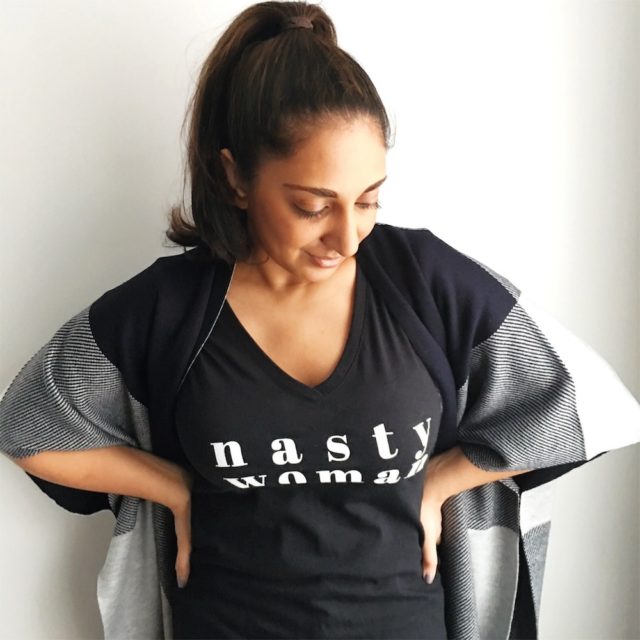My mission for Hitha On The Go has always been to help you live your best lives. I firmly believe that “being knowledgeable and engaged†is a core pillar of that mission. I vowed to listen with an open mind and heart after the election, and I ask you to do the same today. There is a lot of noise and misconceptions about Planned Parenthood – mostly around abortion. Today’s post is to give you information about healthcare access for uninsured, how Planned Parenthood fits into it, and what the elimination of federal funding means for millions of Americans.Â
What I won’t mention in this post – abortion. Abortion has become synonymous with Planned Parenthood, which has clouded our ability to look at the organization objectively – on both sides of the aisle.
Today I want to focus on Planned Parenthood (without the filter of abortion), and examine the role they play in our healthcare system.
I don’t ask you to agree with me. I also don’t wish to launch a digital firestorm of differing opinions. All I ask is for you to read this post with an open mind, and contribute to a meaningful dialogue.

Congress is like butter. It’s on a roll!
The 115th Congress (we knew that!) has been abuzz with activity. And one big move grabbed a lot of attention – including my own.
Speaker Ryan and the House’s GOP leadership pledged to cut federal funding from Planned Parenthood.
I know Planned Parenthood. You know Planned Parenthood. And we all have strong opinions about the 100-year organization.
I admit, I nearly hit the “retweet†button obsessively when the news broke yesterday. But one thought stopped me.
“I don’t actually know how Planned Parenthood fits in our healthcare system.â€
I didn’t even know what an FQHC was – the first time I saw the acronym was stalking Grace on Instagram (yes, I Insta-stalk my friends).
And so we (my assistant Mackenzie and I) set out to learn. We read congressional research reports, published papers from conservative and liberal think tanks, and countless articles. We talked a lot. We researched some more.
And then we wrote.
We sought out to answer 4 big questions about Planned Parenthood (that have nothing to do with abortion).
And we did.
Before we start, here’s the TL;DR on terms you’ve heard before (but don’t exactly know what they are or do)
- Medicare – federal health coverage for people who are 65 years and older or who have a severe disability, regardless of their personal income.
- Medicaid – health insurance for people with low income, that is funded jointly by each state and federally. At least $1 is matched by the federal government for every dollar spent by the state in the program, on qualifying Medicaid expenditures.
- FQHC (federally qualified health center) – community-based health centers that provide a wide array of primary and preventative care – general doctors, dentists, pediatricians, and OB-GYNs. They accept most insurance providers (including Medicare and Medicaid) and always provide care, regardless of anyone’s ability to pay. You’ll find FQHCs in mostly urban and underserved areas.
- RHC (rural health clinic) – like FQHCs, RHCs provide primary and preventative care to Medicare and Medicaid patients. Unlike FQHCs, they’re not required to provide care to uninsured (though many do) and are often limited to primary health care services, first response emergency care, and to handle 6 basic lab tests.
- Title X – a federal program focused solely family planning services. Facilities receiving Title X funds must meet and maintain certain guidelines – provide care to all individuals, maintaining confidentiality regardless of age, and provide the mandated range of services. Title X funds cannot be used for abortions.
History lesson – The Public Health Service Act (which includes Title X) was passed in 1970, with strong bipartisan support. Can’t we all just get along again?
Got it? Good. Let’s dig into the questions.
What’s the difference between PP and FQHC and RHC?
FQHCs and RHCs are certified by the Centers for Medicare and Medicaid Services – which makes sense, given that they cater primarily to those patients. As such, they have to meet and maintain certain criteria to obtain and maintain this designation.
Planned Parenthood, on the other hand, is a nonprofit organization that’s focused on providing reproductive health care and education. Their services are not general, which prevents them from being certified as a FQHC or RHC. They do, however, meet Medicare, Medicaid, and Title X’s eligibility to receive reimbursements and grants on the millions of services they do provide – with the exception of abortion.
What does Planned Parenthood do that FQHC and RHC don’t?
PP is solely focused on reproductive health for women and men alike. This is what and how much they do:
- 42% STD/STI testing and treatment (women and men)
- 34% contraceptive services
- 11% women’s health treatment
- 9% cancer screening and protection (women and men)
- 3% abortion services
- 1% adoption referrals and family planning (women and men)
Look at the top two services Planned Parenthood provides – STD/STI testing and treatment, and contraception.
These are sensitive, and often emotional, services to go through.
How does Planned Parenthood get funded?
The organization gets funded four ways
- government
- private insurance reimbursements
- donations
- operating revenue
For the purposes of this post, let’s focus on government funding.
PP receives funds from Medicaid (in the form of reimbursements for the non-abortive care they provide), and from Title X (as a grant, to be used on family planning services except for abortion).
Planned Parenthood receives just under half of their overall funding from the government, with over $400M coming from Medicaid reimbursements. Which brings us to the next question…
What happens to Planned Parenthood if federal funding is withdrawn?
Truthfully, I don’t know.
But let’s take a look at Texas.
In 2015, Governor Greg Abbott cut state Medicaid funding to Planned Parenthood centers (and other family planning centers as well), and funded the Texas Women’s Health Program instead. In doing so, he also eliminated the federal funding as well, which made up 90% of the Medicare reimbursement to Planned Parenthood in Texas.
The Texas Women’s Health Program, in addition to receiving all these funds, could legally withhold funds from any clinic that even affiliated with an abortion provider.
The result – fewer birth control reimbursements (meaning women were unable to access them from their original providers, though Medicaid), and an increase in births.
Now, these are general summaries (you can find all data here), but it’s a preview of what’s to come. Even though women could have gone to FQHCs and RHCs to continue their contraceptive access, they didn’t.
Why?
It goes back to the a previous question – what does PP do that FQHCs and RHCs don’t?
Location may have played a factor, in that identifying a FQHC or RHC may be difficult for any patient – you have to first know that they exist, and then locate them.
And yes – once you find your closest one, you can go in for a STD test or a prescription for birth control.
But choice is something that we heard a lot from the Republican party during this election. Choice in obtaining healthcare (through vouchers or credits), choice in schools.
But what about choice in where to receive sensitive medical care? Should any woman or man, regardless of their race, economic status, or insurance coverage, have the right to choose where to receive treatment and care that is quite sensitive and personal?
The quality of care and access in a FQHC and RHC is largely variable. But something Planned Parenthood has done over the past 100 years is provide consistent supportive and sensitive care to everyone who walks in their doors – regardless of which location you walk into.
2.5 million people may attest to that.
—
If you’re still reading – thank you. Hitting ‘publish’ like this (on a lifestyle blog, no less) is a risk. We’ve taken great care in presenting facts and as objective of a synopsis as we could.
And now – actions you can take, based on how you feel about this.
If you agree with the withdrawal of federal funds for Planned Parenthood…
- Call your local congressman/woman’s office and log your opinion with them. I spent two summers logging constituent opinions, and they do matter.
If you believe Planned Parenthood should continue receiving federal funds…
- Set up a recurring donation to Planned Parenthood, to a state that’s cut funding to the organization (Texas, Arkansas, Alabama, New Hampshire, Louisiana, North Carolina, and Utah). Pro tip – you can make your donation in someone’s honor (Paul Ryan, anyone?)
- Call your local congressman/woman, Speaker Ryan, Majority Leader Kevin McCarthy, Majority Whip Steve Scalise and log your opinion. Here’s a script you can use:
I’m calling to voice my support that Planned Parenthood continue to receive federal funds in the form on Medicaid reimbursements and Title X funding.
This Google doc has scripts, phone numbers, and everything you need to contact your elected officials easily. - Purchase the ‘Nasty Woman’ shirt I’m wearing in the picture, supporting Samantha Bee’s campaign for Planned Parenthood in Los Angeles County.
Additional reading:
- Medicaid Financing: How Does it Work and What are the Implications?, KFF
- Factors Related to the Use of Planned Parenthood Affiliated Health Centers (PPAHCs) and Federally Qualified Health Centers (FQHCs), Congressional Research Service
- Planned Parenthood and Federally Qualified Health Centers, Charlotte Lozier Institute
- Effect of Removal of Planned Parenthood from the Texas Women’s Health Program, New England Journal of Medicine
- In Real Life: Federal Restrictions on Abortion Coverage and the Women They Impact, Guttmacher Institute
- Quantifying Planned Parenthood’s Critical Role In Meeting The Need For Publicly Supported Contraceptive Care, Health Affairs Blog
- Texas officially kicking Planned Parenthood out of Medicaid, The Texas Tribune
Thank you for reading, and acting in the way you feel aligns with your values. I truly appreciate your support and being a part of this corner of the Internet.
If you found this post helpful in any way, I invite you to share it with your family, friends, and random Internet followers to start a dialogue of your own.
My hope is that we discover that there’s more that unites us than divides us.

